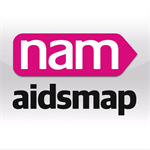Posted on July 24, 2014
Source: aidsmap

Kennedy C et al. Is use of antiretroviral treatment (ART) associated with decreased condom use? A meta-analysis of studies from low- and middle-income countries (LMICs). 20th International AIDS Conference, Melbourne, abstract WEAC0104, 2014.
A meta-analysis of every study that has looked at the sexual behaviour of people after starting HIV treatment has found not a single instance of so-called ‘risk compensation’ – the idea that if people start taking HIV treatment they will fear transmitting HIV less and so start taking more risks.
On the contrary: in 15 studies that met inclusion criteria for the analysis, starting HIV treatment was consistently associated with a fall in sexual risk behaviour, as measured by increased condom use. This association held true for both genders; for committed relationships and casual sex; and for partners both known, and not known, to be HIV negative.
The results were presented at the 20th International AIDS Conference (AIDS 2014) in Melbourne, Australia.
The limitations of this meta-analysis are that most of the studies were conducted in sub-Saharan Africa and among heterosexual people, so the results might not hold for other areas and for other populations such as gay men. But the meta-analysis does appear to demolish the idea that riskier behaviour is an inevitable, or even a normal, reaction to taking HIV treatment.
The Evidence Project is a programme sponsored by the US National Institute of Mental Health examining the strength of evidence for different behavioural interventions in people living with HIV. Researchers from Johns Hopkins and South Carolina Universities in the US combed through the literature to find studies published between 1990 and May 2012 that were conducted in low- or middle-income countries, provided treatment and, when it became available, combination antiretroviral therapy (ART) to people living with HIV; and which compared sexual risk behaviour either in people on ART with people not on ART, or in the same people before and after starting ART.
They found 37 studies that met these criteria (and another twelve only conducted in high-income countries). Thirty of the 37 came from sub-Saharan Africa, four from Thailand, two from Brazil and one from India.
Sexual risk was defined in a number of different ways including condom use, number of partners, proportion having casual sex, proportion abstinent, time of sexual debut, and incidence of sexually transmitted infections (STIs). For the sake of consistency, therefore, the current analysis only looked at 15 studies that rated the most commonly measured risk behaviour, condom use.
Overall, for both genders and any type of partner, the studies found that people taking ART used condoms 80% more often than people not on ART. In women on ART, rates of condom use doubled compared with women not on ART, and in men on ART, condom use was 50% higher. The association was even stronger when restricted to particular kinds of partner: the four studies that looked specifically at sex with partners of opposite or unknown HIV status found that condom use in people on ART rose by 160%, and it also rose by 160% (albeit from a much lower level) with spouses or regular partners.